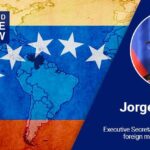
By Alejandra Garcia – Feb 13, 2022
Even though you wouldn’t know if you only followed the corporate media, in January, violence continued to spiral in Colombia. Human rights groups recorded an increase in attacks against police stations, military bases and civilians, and reported on assassinations and intimidation tactics targeting social leaders in several departments [of the country]. In February, the panorama has been no different.
This Latin American country is bleeding to death before the unblinking eyes of President Iván Duque’s government. The wounds are open, especially in three areas. The first one comprises Arauca and North Santander, which witnessed the worst incident since January with the massacre of at least 27 people.
The second zone is Cauca and Nariño, where there have been massacres, assassinations of social leaders, and clashes between illegal armed groups. The unrestrained violence occurring in this territory of the country has forced the displacement of 500 people and the self-confinement of close to 18,000 residents in the first two months of this year.
RELATED CONTENT: Colombia: ‘In Arauca We Have Suffered Every Form of War’
The other critical territory is Urabá, which besides being the heartland of a paramilitary group descended from the Clan del Golfo, is a strategic corridor in the dispute for drug trafficking. In that region, there have been 1,000 forced displacements, while close to 2,000 people are affected because they fear leaving their homes.
The violence seems to have no limit and is a consequence of the acute social inequality that plagues the country after decades of internal conflicts, government incompetence, corruption, drug trafficking and total compliance to the dictates of the US.
Back in November of 2016, a hopeful development took place when after years of negotiation and popular consultation, then-President Juan Manuel Santos and the now extinct Revolutionary Armed Forces of Colombia – People’s Army (FARC-EP) signed an agreement to end the conflict and build stable peace in Colombia.
But the arrival of the ultra-right-wing Duque to power in 2018 dampened the people’s hope to achieve these goals. This loyal disciple of former President Álvaro Uribe, and lap dog to the US, has constantly polarized and glorified the violence, and has done everything possible to undermine the implementation of the peace accords.
Six years after the signing of the agreement in Havana, Cuba, poverty, inequality, the proliferation of illegal armed groups, and the negligence of the State in certain regions has fueled social uncertainty and hopelessness.
From 2018 to date, more than 900 social leaders have been assassinated. Guerrillas, drug trafficking groups, and dissidents of the extinct FARC continue to operate while Duque takes no measures to protect the Colombian people.
Colombia lives under constant mass displacement, selective assassinations, forced recruitment of children and adolescents, sexual violence against girls and women, and other serious human rights violations.
The persistent violence prompted a wave of protests in 2020. Confrontations between police and citizens were another sign of the tensions in the country, reflecting the lack of institutional responses to social demands. Instead of listening to the people, Duque sent the Mobile Anti-Riot Squad (ESMAD) to repress and kill protesters.
Nevertheless, analysts still have hope for the future and believe that sustainable peace is possible, but only if the Peace Accords accords are fulfilled and if the Colombian people get to determine their own future without the interference of Washington. This will be the only way to reduce economic and social inequality, something so longed for by the Colombian people, who are tired of living in constant fear. Colombia, placed in the heart of Latin America, needs to close its large open wounds. They have already experienced too many years of pain.
Featured image: A child flees from paramilitary groups, Colombia. Photo: Twitter/ @almayadeen_es
(Resumen Latinoamericano – English)





